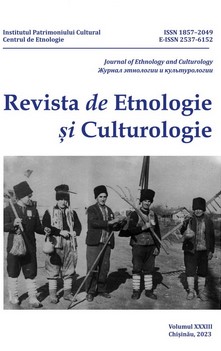Construction earthenware in Western Ukraine: continuity of ethnographical tradition (based on the examples of bricks)
Construction earthenware in Western Ukraine: continuity of ethnographical tradition (based on the examples of bricks)
Author(s): Halyna IVASHKIVSubject(s): Archaeology, Cultural history, Architecture, Modern Age, Cultural Anthropology / Ethnology, 13th to 14th Centuries, 15th Century
Published by: Institutul Patrimoniului Cultural al Academiei de Științe a Moldovei
Keywords: Western Ukraine; plinth-shaped bricks; “paltsivka”; stamps; brick shape and decoration;
Summary/Abstract: The article highlights the specificity of the brick as one of major types of construction material in the ХІV–ХХ c. in Western Ukraine. On the territory of the region, namely in Lviv, the brick has been used in construction since the second half of the ХІV c. when city walls and three main cathedrals were built (in particular, we mean the Roman-Catholic, the Armenian and St. George’s Cathedrals). Among the rare findings, there is a brick with a scratched motif of a Greek-type cross that was excavated by archaeologists in the center of Lviv. In the XVI–XVIII c., constructors used a widespread type of brick called “paltsivka”, the name of which originates from the method of its production, i. e., on one of the wider sides of the brick craftsmen made “gutters” with their fingers (Lviv, Zhovkva). This type of bricks was used in building fortifications, monasteries and castles. There are rare samples of bricks with imprints of a child’s or an adult’s foot or a dog’s paw (Lviv, Kopychyntsi). Bricks of the 19th century, which were produced industrially, contained embossed and en-graved Cyrillic or Latin initials, sometimes surnames of enterprise owners, the year and place of production. Bricks from Ivan Levynskyi’s factory were used to build Lviv Opera and Ballet Theater, the railway station and later other buildings in the city, namely in the district of Kastelivka. At that time, brickworks functioned in Boikivshchyna, Pokuttia, Western Podillia and Volyn. Using the example of items from museums and private collections, as well as the author’s own expedition notes, the article has traced the evolution of brick shapes and the inscriptions on them.
Journal: Revista de Etnologie şi Culturologie
- Issue Year: XXXIII/2023
- Issue No: 1
- Page Range: 38-43
- Page Count: 6
- Language: English

